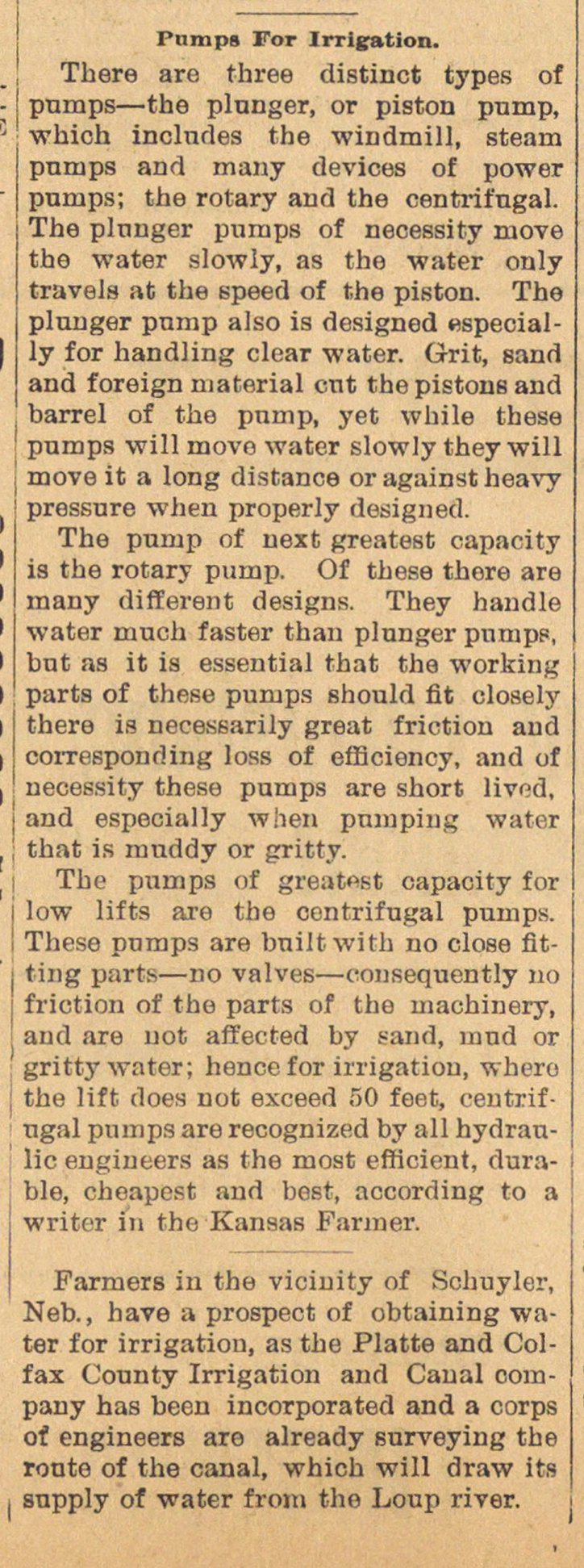Pumps For Irrigation

There are three distinct types of pumps - the plunger, or piston pump, which inclnrles the windmill, steam pnmps and many devices of power pumps; the rotary and the centriï'ugal. The plnnger pumps of necessity move the water slowly, as the water only travels at the speed of the piston. The plunger pump also is designed specially for handling clear water. Grit, sand and foreign material ent the pistons and barrel of the pnmp, yet while these pumps will movo water slowly they will move it a long distance or against heavy pressure when properly designed. The pump of next greatest capacity is the rotary pump. Of these there are many different designs. They handle water much faster thau plunger pnnipp, but as it is essential that the working parts of these pumps should fit closely there is necessarily great friction and corrasponding loss of efficiency, and of necessity these pumps are short livod, and especially w!ien pumping water that is mnddy or gritty. The pumps of greatfist oapacity for low lifts are the centrifugal pumps. These pumps are built with no close fitting parts - no valves - consequently no fiiotion of the parts of the niachinery, and are not affected by sand, mud or gritty water; henee for irrigatiou, whero the lift does not exceed 50 feet, centrifugal pumps are recognized by all hydraulic engineers as the most efficiënt, durable, cheapest and best, according to a writer in the Kansas Farmer. Farmers in the viciuity of Schuyler, Neb., have a prospect of obtaining water for irrigation, as the Platte and Colfax County Irrigation and Canal company has been incorporated and a corps of engineers are already surveying the route of the canal, which will draw its supply of water trom the Loup river.
Article
Subjects
Ann Arbor Argus
Old News